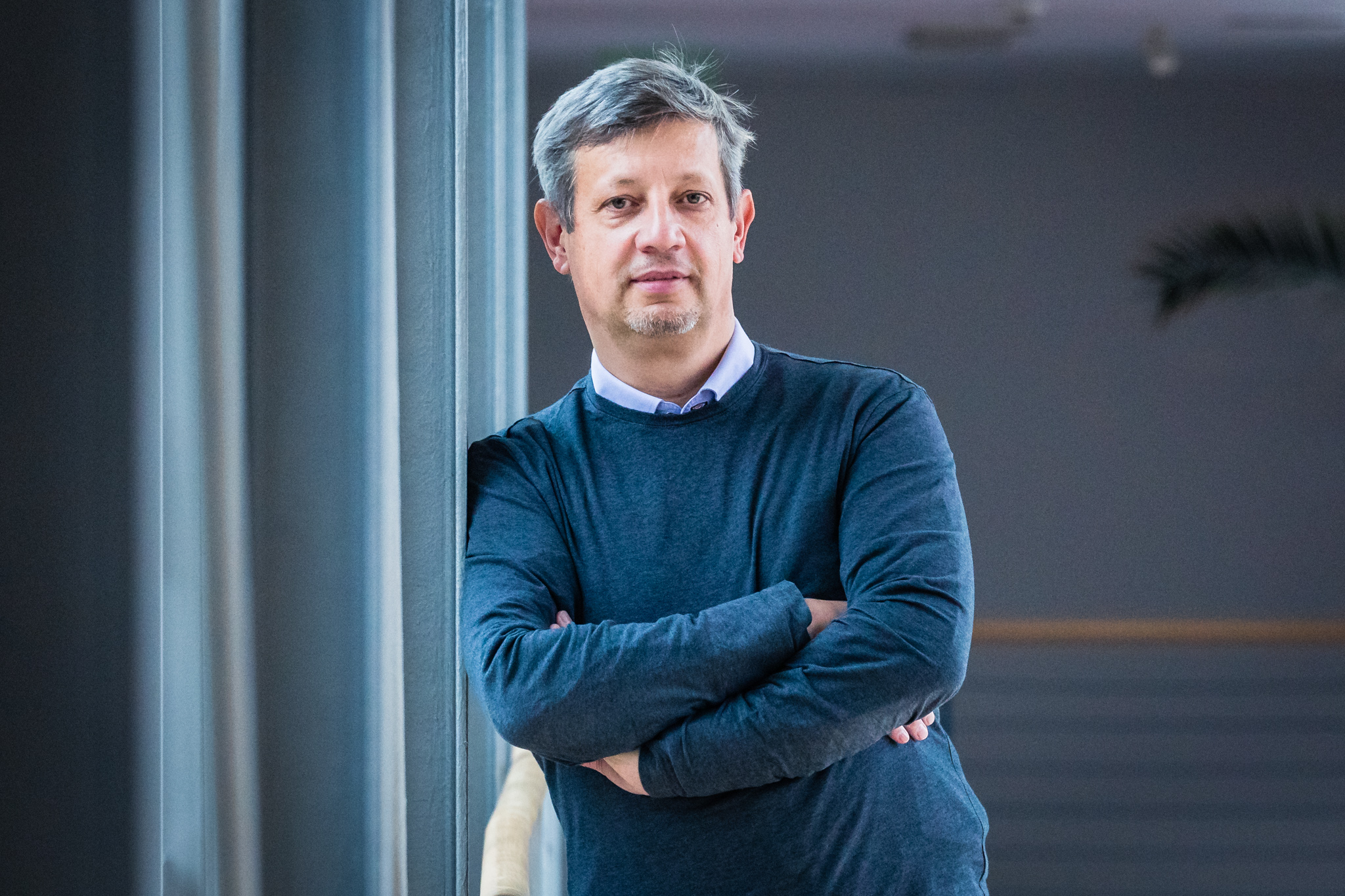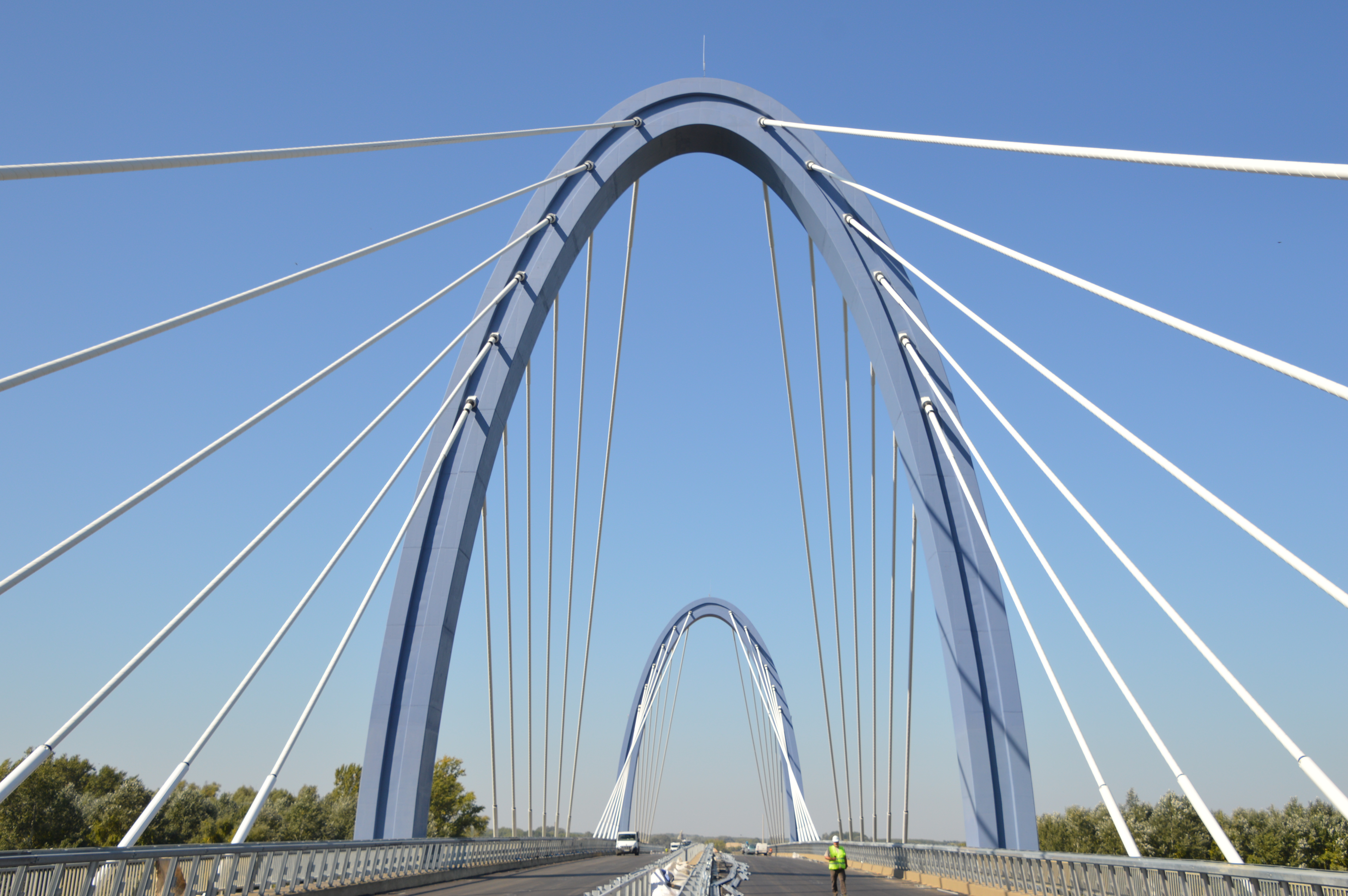Unique Tisza bridge designed by Széchenyi lecturer

The new Tisza bridge, some 300 metres long, is practically finished and will soon be opened to traffic. This moment, however, marks the end of a very long process, the fulfilment of a 16-year dream. Dr Teiter's unusual design was first submitted by his company, Uvaterv Zrt., along with several other designs, in 2005 to a competition for a Danube bridge in Esztergom; it came second, but was never placed in the back of the drawer.

(Photo: Csaba József Májer)
"The cable-stayed bridge I designed was very unique, because - as I recently checked - probably the first one of its kind in the world was completed in Italy in 2005, but that was a pedestrian bridge. We kept the design alive and submitted it for the M44 Körös bridge, the M43 Tisza bridge and finally the M44 Tisza bridge on the M44 motorway.
“For the latter we secured investment from the National Infrastructure Development Corporation. Based on the design documentation, the contractor had to submit a bid that included the preparation of the construction plans, so the work required serious consultation and careful attention to detail," said Dr Teiter, who was awarded the János Feketeházy Prize by the bridge industry for his design of the bridge.
 The profession recognised the work of Dr Zoltán Teiter with the János Feketeházy Award
The profession recognised the work of Dr Zoltán Teiter with the János Feketeházy Award
(Photo: Péter Gyukics)
In addition to the unique shape of the bridge, it also features a number of rare and some unique construction designs in Hungary. Unusually bold is the way the structure's inclined cables are guided, formed by deflecting straight lines, resulting in a twisted cable surface. It is also unique in that, for the first time in Hungary, a reinforced concrete pylon with a curved mild steel inlay has been used, which moreover is subjected to significant and varying stresses in all directions. It is the first cable-stayed bridge in the country with reinforced concrete-steel supports, the so-called composite cross-section. It is also the only bridge to use deviator saddles to guide the stay cables over the pylons. Another interesting feature is that the structure has no longitudinal support, the forces in question being absorbed by the cables through the pylons, and in the case of heavy loads, the bearings at both ends of the bridge also having anchoring functions.
 The Tisza bridge of the M44 motorway
The Tisza bridge of the M44 motorway
(Photo: Péter Gyukics)
At Széchenyi István University, the best Hungarian professionals pass on knowledge to the next generation. Dr Zoltán Teiter, who also completed his PhD at the University of Győr, introduces students to the secrets of the bridge-building profession in the Department of Structural and Geotechnical Engineering in the Faculty of Architecture, Civil Engineering and Transport Sciences.
"I have been teaching at the University since 2012, and have contributed to the educational offer by developing three courses on the subject of bridges. From the beginning, my aim was to provide young people with practical, marketable knowledge. We have also taken a big step forward by offering not only undergraduate but also Masters programmes for a few years now, so that here in Győr we can provide the highest level of education for future bridge engineers. Based on my own experience, but also on the feedback of our graduates, I can say that engineers graduating from Széchenyi University do well in the profession, and can stand their ground in a challenging field," stressed the University's senior lecturer. He concluded by saying that he would recommend the world of bridges to engineering students who like to tackle serious theoretical challenges, who would like to work on really large structures and who are not afraid of the fact that every site and every bridge is different, so appropriate solutions always need to be sought for new problems.
 The structure is also a special sight for those passing over the bridge
The structure is also a special sight for those passing over the bridge
(Photo: János Karkus)
Background
The Tisza bridge on the M44 motorway is the result of around three years of design work and parallel construction work. Duna Aszfalt Zrt. was awarded both the design and construction contracts for the bridge. Hódút Ltd. was responsible for the assembly and installation of the steel structures, while A-Híd Zrt. was responsible for the construction of the solid reinforced concrete pylons and the reinforced concrete deck slab. The designer and structural engineer was Dr Zoltán Teiter, senior lecturer at the University of Győr and Deputy Head of the Bridges Office at Uvaterv Zrt.











